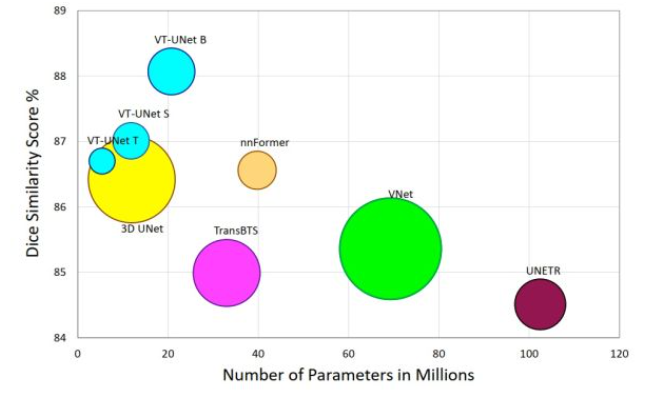This repo contains the supported pytorch code and configuration files to reproduce 3D medical image segmentaion results of VT-UNet.
Our previous Code for A Volumetric Transformer for Accurate 3D Tumor Segmentation can be found iside version 1 folder.
Parts of codes are borrowed from nn-UNet.
This software was originally designed and run on a system running Ubuntu.
- Create a folder under VTUNet as DATASET
- Download MSD BraTS dataset (http://medicaldecathlon.com/) and put it under DATASET/vtunet_raw/vtunet_raw_data
- Rename folder as Task03_tumor
- Move dataset.json file to Task03_tumor
- Download swin-T pretrained weights : https://github.com/SwinTransformer/storage/releases/download/v1.0.8/swin_tiny_patch4_window7_224_22k.pth
- Add it under pretrained_ckpt folder.
vi ~/.bashrc
- export vtunet_raw_data_base="/home/VTUNet/DATASET/vtunet_raw/vtunet_raw_data"
- export vtunet_preprocessed="/home/VTUNet/DATASET/vtunet_preprocessed"
- export RESULTS_FOLDER_VTUNET="/home/VTUNet/DATASET/vtunet_trained_models"
source ~/.bashrc
Create a virtual environment
- virtualenv -p /usr/bin/python3.8 venv
- source venv/bin/activate
Install torch
- pip3 install torch==1.10.2+cu113 torchvision==0.11.3+cu113 torchaudio==0.10.2+cu113 -f https://download.pytorch.org/whl/cu113/torch_stable.html
Install other dependencies
- pip install -r requirements.txt
cd VTUNet
pip install -e .
- vtunet_convert_decathlon_task -i /home/VTUNet/DATASET/vtunet_raw/vtunet_raw_data/Task03_tumor
- vtunet_plan_and_preprocess -t 3
cd vtunet
- CUDA_VISIBLE_DEVICES=0 nohup vtunet_train 3d_fullres vtunetTrainerV2_vtunet_tumor 3 0 &> small.out &
- CUDA_VISIBLE_DEVICES=0 nohup vtunet_train 3d_fullres vtunetTrainerV2_vtunet_tumor_base 3 0 &> base.out &
cd /home/VTUNet/DATASET/vtunet_raw/vtunet_raw_data/vtunet_raw_data/Task003_tumor/
- CUDA_VISIBLE_DEVICES=0 vtunet_predict -i imagesTs -o inferTs/vtunet_tumor -m 3d_fullres -t 3 -f 0 -chk model_best -tr vtunetTrainerV2_vtunet_tumor
- python vtunet/inference_tumor.py vtunet_tumor
- VT-UNet-S - (fold 0 only)
- VT-UNet-B (To be updated)
This repository makes liberal use of code from open_brats2020, Swin Transformer, Video Swin Transformer, Swin-Unet, nnUNet and nnFormer
@inproceedings{peiris2022robust,
title={A Robust Volumetric Transformer for Accurate 3D Tumor Segmentation},
author={Peiris, Himashi and Hayat, Munawar and Chen, Zhaolin and Egan, Gary and Harandi, Mehrtash},
booktitle={International Conference on Medical Image Computing and Computer-Assisted Intervention},
pages={162--172},
year={2022},
organization={Springer}
}


